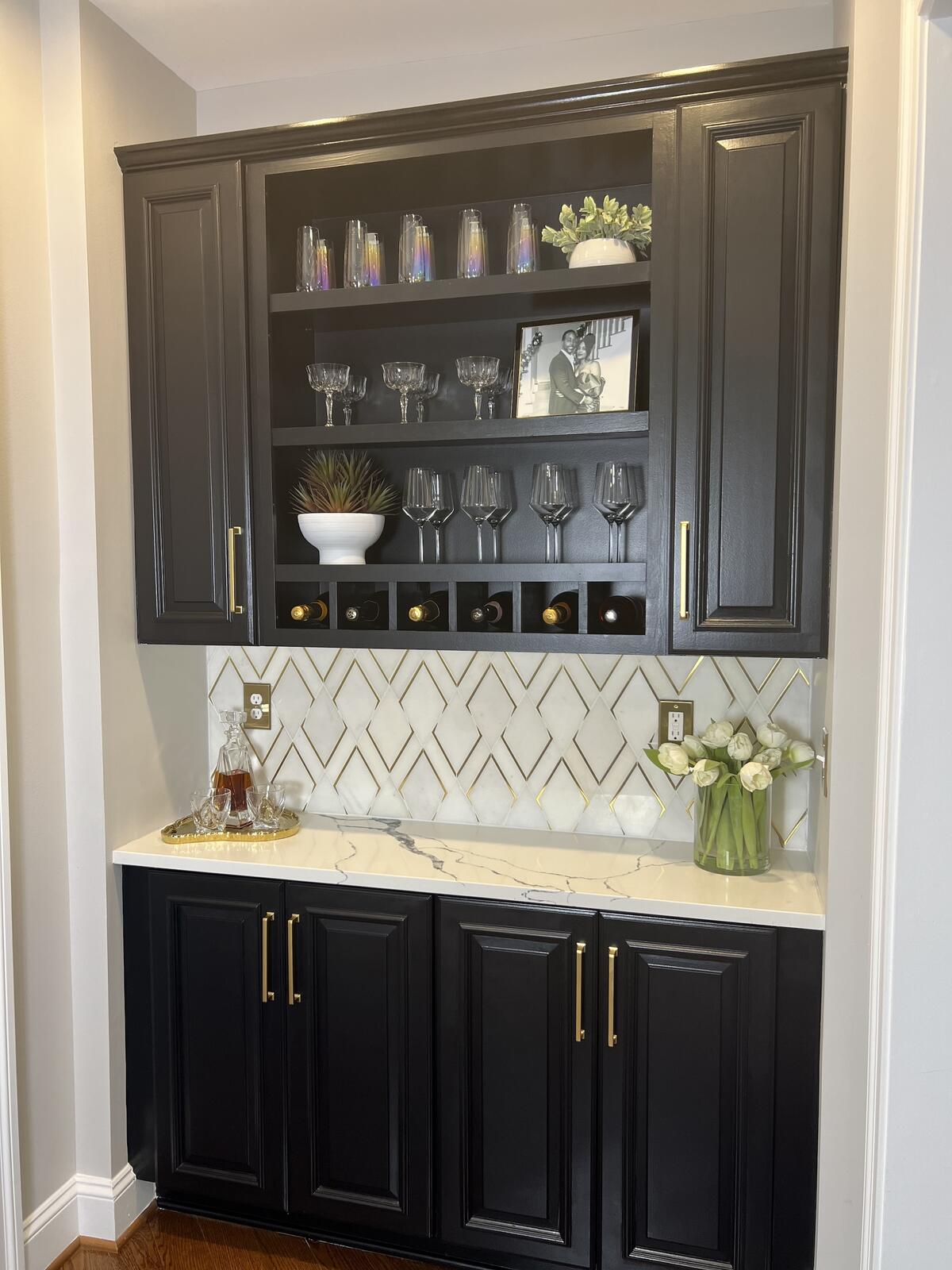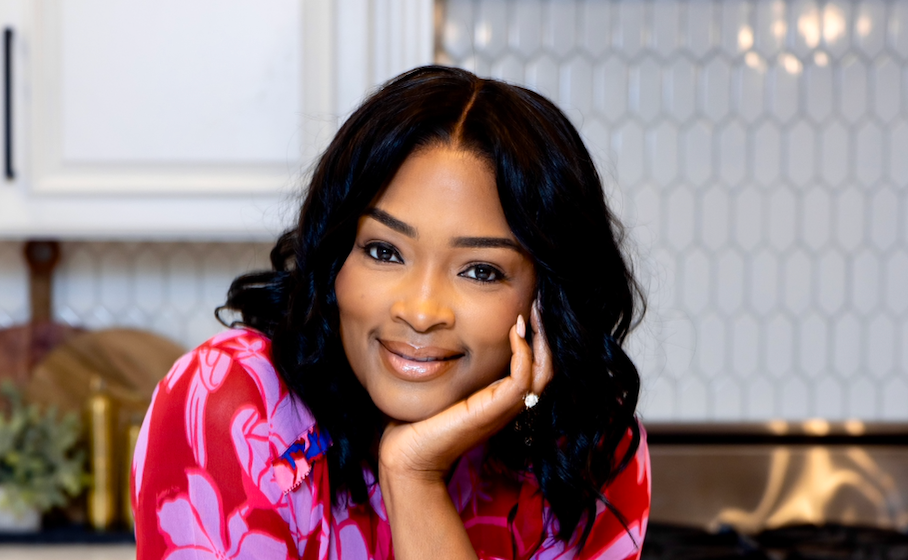On the day of her college graduation, Nneka Mosley’s mother gave her a sewing machine, a gift that would change the course of her career. By then, it was clear that she had inherited her mother’s creative gene: Together, the pair had spent countless hours upholstering furniture and making pillows at home, and while studying marketing in college, Mosley began hand-sewing outfits for herself and friends to wear to parties.
“I let it sit for a while—I was too intimidated to try it. One day I got bored, and I decided to teach myself how to use it, and I ended up starting a handbag line after that,” says Mosley. “That went from a hobby to a full-blown business. In terms of official design, that was the first time that I really got into it.”
After a few years of juggling her handbag business and a 9-to-5 event marketing job, Mosley was eager to shift gears creatively and turned her attention to home projects. Teaming up with a similarly DIY-inclined friend, the duo launched Handy Chics—a company that hosted workshops in Philadelphia to teach women how to make and upholster furniture. Leaning further into the idea, she launched a social media page in 2018 called One Handy Momma, where she documented her own home projects alongside how-to videos.
The early days of the account were slow but steady, as Mosley accrued an audience that trickled in from her workshops and other creative ventures. When the pandemic hit, that pacing changed nearly overnight—after a few viral videos and a feature on Live with Kelly and Ryan, Mosley suddenly found herself with a large enough following to make social media her full-time gig. Today, her audience numbers 335,000 followers on Instagram and 116,300 on TikTok.
Ahead, Mosley talks about how to reach a level of consistency that feels sustainable, the best way to turn long-term projects into short-term content, and the team member who helped her make the leap to full-time social media.
Make a Little Go a Long Way
When it came to content planning, one strategy Mosley considered early on was batching content: filming and editing a collection of videos and posts ahead of time, then posting them throughout the week or month as needed. But with the pace at which her design projects unfolded, she soon found that approach didn’t quite make sense logistically—or leave room for off-the-cuff moments of creativity.

“I try to really stretch out my content as much as possible,” says Mosley. “For example, I’m in the middle of working on [a project where I] built a bed frame and I’m upholstering it. That’s going to be four parts. The first part is me showing how I go shopping for the fabric and the materials, the second is showing how I built the actual wood frame and how I started the upholstery on it, the third post will be showing how everything looks with the upholstered wood pieces on the frame, and then the last part is the reveal.”
Mosley recommends this approach for any designers with long-term projects they’re hoping to convert to content, with the added bonus of encouraging repeat viewers by building suspense until the final result is unveiled. Plus, the extra footage captured by breaking down each step into separate videos can later be repurposed into additional configurations, like a brief before-and-after that captures the very first and last steps alone.
Tapping the Right Help
When it comes to assembling content, Mosley enlists the help of a variety of tech tools, including the editing apps Splice and CapCut—plus good old Microsoft Outlook. Maintaining a diligent calendar, she says, is essential for tracking the frequency of posts and ensuring that content, project and brand-partnership schedules are operating in sync.
In recent years, she has also leaned on people power, investing in team members who can help fuel the brand partnerships aspect of her business, which brings in the most revenue (alongside affiliate links and digital products like a design e-book, building plans and the occasional workshop). The same year she took on social media as a full-time job, she also began working with a manager, who not only boosted Mosley’s business, but also introduced her to another crucial hire: her videographer.
“I thought it was a good investment to make to add to the quality of the content I put out. … You see other creators all over social media working with [brands], and some have OK video quality, while others have really great quality,” she says. “I don’t use a videographer for every campaign, but if it’s a larger [partnership] where it’s going to be really beneficial for me to have someone actually shooting different angles versus me trying to run around and change the camera angle and the tripod, I’ll use the videographer.”
Growth Without Burnout
After Mosley’s TV appearance helped her reach the first 10,000 followers, she decided it was crunch time: If she wanted to keep her growth on a steady upward trajectory, she had to up her posting habits. Initially, she tried to post four to five times per week—and quickly found that the balance between the quality of her projects, her content and her sanity was fraying. She downshifted slightly to three times per week, and found that the rate of her audience growth remained the same and allowed her workload to even out.
“I made a really concerted effort to be consistent and to post multiple times a week, but I did not want to burn myself out and try to lock into posting every day,” says Mosley. “That’s kind of been my motto ever since: In terms of just consistency and how you show up, it’s important to be real with yourself and what you’re able and willing to do.”
While posting regularly each week is key, Mosley stresses that it’s also important to remember that growth on social media can be a long haul—results don’t always show up after a few weeks, or even a few months. In the meantime, she says to focus on leveling up the quality of your content (testing out different formats and trends that feel true to you) rather than maxing out on quantity.
“Don’t just randomly post—if you’re posting for the day, really stand by and love whatever you’re putting out there,” says Mosley. “This is a reflection of you, a reflection of your brand, your business, what you represent and what you love. That’s what’s going to bring people to you, and those are the ones who are going to stick around.”





























